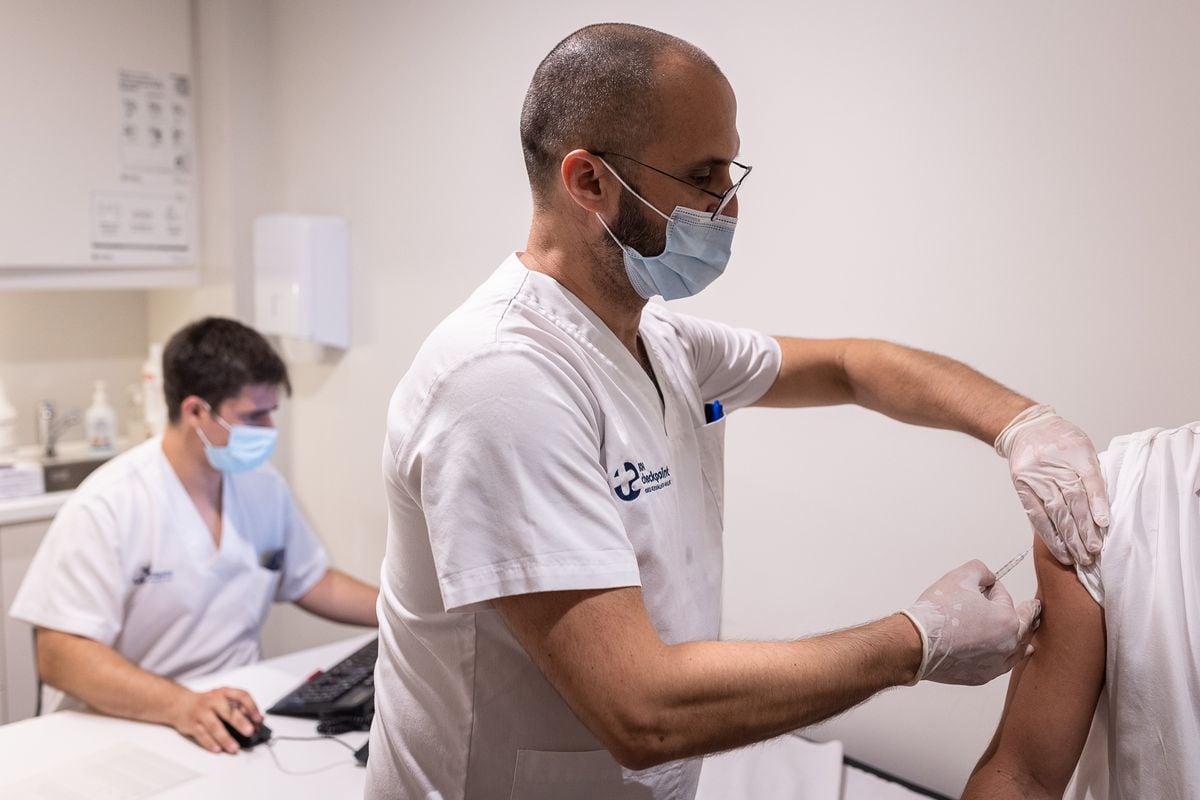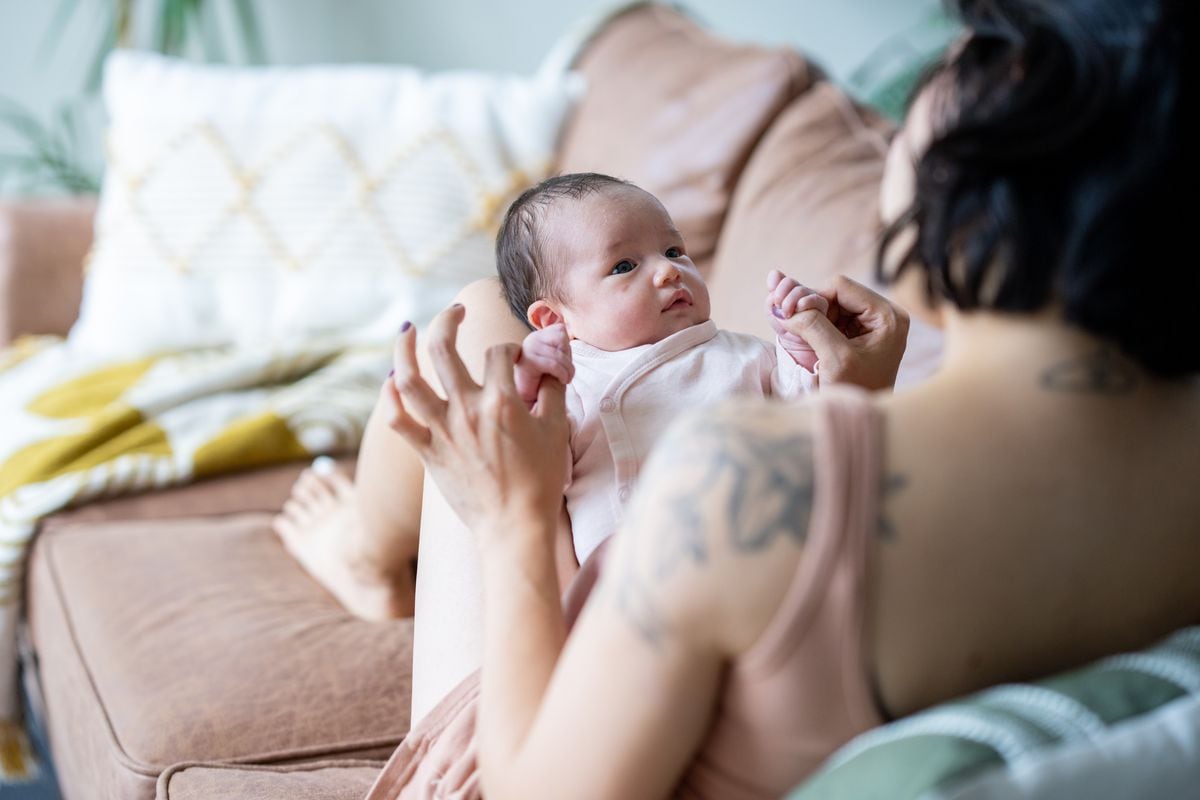A little over a decade ago, Elena García Armada was working with walking robots at the Center for Automation and Robotics (CAR) of the Higher Council for Scientific Research (CSIC) when the parents of Daniela, a six-year-old girl who was quadriplegic after suffer a traffic accident when she was only one year old, they came in search of a solution that would allow the girl to walk.
Her case gave rise to the company Marsi Bionics, led by the researcher herself and with which she has developed the world's first adaptable pediatric exoskeleton, ATLAS.
This invention has earned this 50-year-old woman from Valladolid the popular award of the 2022 European Inventor Award granted by the European Patent Office, a body of the European Union.
The last Spaniard to receive it was Margarita Salas, in 2019, for the achievements of her entire career.
According to García Armada, who studied Industrial Engineering moved by the ability of robotics to "give life to something inert", this scientific area "is evolving in those applications that can improve people's quality of life".
That has been the case with this device, which improves the rehabilitation of patients with different diseases to the point that, after a while, they can do without it to walk only with the help of a conventional walker.
Ask.
How did you start working on the exoskeleton from Daniela's case?
Response.
We were starting to work on the line of exoskeletons, although the center (the CAR) had a very clear focus on industrial application, to help workers reduce their ailments due to lifting loads, very repetitive movements... The change was caused by the visit of Daniela's parents.
The girl had never walked before.
They knew there were two adult exoskeletons on the market, but those companies had no plans to develop a pediatric one.
As researchers, we understood that it was a social problem: 17 million children in the world are affected by not being able to walk, and not only because of their illnesses, but immobility causes a series of complications that in many cases hinder the quality and life expectancy.
In three years we had the first prototype of the exoskeleton.
The process has been very long, mainly due to the lack of funding.
Daniela turned 19 a month ago and she has not been able to benefit from her exoskeleton, although we hope that she can enter the clinical trials of the adult device that we are preparing.
More information
The first children's exoskeleton is Spanish and is ready for sale
Q.
Is the pediatric one designed for a specific age?
A.
It is telescopic and can be adapted to children from three to 12 years old.
It depends on the measurements.
Q.
To achieve adaptability and biomimicry, what materials are required?
R.
We need elements that are capable of adapting, such as elastic materials, control systems that can measure what is happening there (for which many sensors are needed) and decision-making systems with a certain intelligence.
That is where artificial intelligence, electromechanics and, in general, intelligent robotics come together.
Q.
And how exactly do you get the exoskeleton to detect the will to walk?
A.
It detects the intention of movement in a residual movement.
The child tries to do the movement, but has no muscle strength.
Q.
In other words, there has to be some mobility...
A.
There has to be residual mobility for the device to detect the intention to move.
It does not capture brain signals, but an actual intention to move.
The device has a lot of sensitivity and is able to detect that.
In rehabilitation it is also used to play with thresholds and with the level of force that the physiotherapist wants the patient to exert.
The first adaptable pediatric exoskeleton has earned Elena García Armada a European Inventor Award 2022 from the European Patent Office.Copyright: European Patent Office.
Photo by Amador Toril Diaz.
P.
How is the evolution of the children who are using it?
R.
At first, it allows them to stand up and walk and with that there is already a psychological impact.
The first thing that appears is his smile.
But, later, in very few sessions, physical improvements begin to be seen in the range of joints and strength.
The evolution that can be seen after six months is impressive: spine and hip surgeries are being delayed... We are seeing that children who had never walked before begin to move with the help of walkers, without the exoskeleton.
And children who were in very critical states begin to stand up on their own from their wheelchairs.
What parents transmit to us is that, apart from this physical evolution, there is a cognitive awakening.
Q.
Where is it being used?
Is it intended to be used during rehabs or is the ultimate goal for patients to be able to use it all day at home?
R.
That is the ultimate goal, but it is true that it is a process and the first step is that it be used in hospitals and therapy centers.
Right now, patients have a couple of sessions a week, in which they go to the center, put on the device, do the rehabilitation and when they finish they go back to their wheelchair and go home.
What we are achieving is improving their state of health, and not only that: it is a comprehensive rehabilitation because it also affects the children psychologically, it is contributing to their personal development.
Q.
How many centers have it?
R.
In Spain, two, and the third is about to.
Outside of Spain, there are in Mexico, in Italy and in Hungary, and we are on our way to England.
We will end the year with devices in 12 centers in total.
Our goal at this time is public health because all centers that are acquiring it are private.
P.
Is it costing you more to implement it in Spain than outside?
A.
Yes, significantly more.
Q.
What is it due to?
R.
I think it is the culture that we have in this country, that we appreciate more what comes from outside than what is our own.
We immediately mistrust the Spain brand.
I don't really know for what reason.
Probably when this company makes a leap abroad it will be easier to buy the devices here, when it comes from the United States...
kick for
Q.
What is necessary for the exoskeleton to reach all the centers where it is needed?
R.
A strong commitment on the part of the authorities and the public administration to absorb its own and unique health technology internationally.
We are talking about something that has important results and benefits in children, for whom time is running out and they really have a lot of urgency to use it.
P.
What differentiates the case of Spain from those of other countries in which similar technologies are being developed?
R.
Who are the leaders right now?
The usual ones: the United States, Japan, Israel... and, in Europe, France, whose technology we have already seen is no better.
The Patent Office has not awarded its technology;
has rewarded ours.
However, it stands out because it receives government and institutional support that has nothing to do with what we receive.
Its technology is not born from public research, but from the business environment, but receives support from institutions to incorporate technology into all centers.
Specific rehabilitation centers based on its technology are even being created in the center of Paris.
All doors are open for this technology to prosper and be sold internationally.
We did not find that support and that financing, neither public nor private.
Technology transfer has been possible thanks to the European Commission, which has helped us finance half of what we needed.
It is costing us more to bring this technology to health centers in Spain than to those in other countries.
We have pioneering, cutting-edge technology that is guaranteed and, instead of promoting it, there is a look the other way that is quite difficult to understand.
P.
In that sense, what does it mean for you to have obtained this European Inventor Award?
R.
It assumes a lot.
On the one hand, it is a guarantee by an institution such as the European Patent Office that our technology is differential.
They have selected those inventions with extraordinary quality.
That, of course, places us preferentially over any device with similar technology.
On the other hand, there is the fact that it has had such important support from the public, from society.
This indicates the need for society, which is asking its rulers to take on these technological advances as soon as possible.
Q.
And what are your plans for this exoskeleton? To make it lighter, maybe?
R.
Right now we are working with the clinics and the next step would be to take it home.
For that, there will be a process of reindustrialization because obviously we have to make the product cheaper and perhaps make it less versatile so that it is simpler and at the same time more affordable.
Q.
They are also developing devices for adults.
A.
We have two for adults.
One is already being marketed for knee rehabilitation and, at the moment, it is in the Hospital de la Zarzuela.
It shortens rehabilitation times by 60% and, above all, greatly improves the postoperative period;
the patient is rehabilitated in the absence of pain.
That is what is making the difference with conventional therapy.
And we are also developing an exoskeleton that is going to make an important qualitative leap to cover the greatest possible number of pathologies and patients.
The prototype is already prepared.
Q.
Having developed one for children and one for adults, does the child one have any specific technical difficulty associated with it?
A.
Our technology is the same, it is based on artificial muscles.
In the end, an exoskeleton is a chain of muscles, and where our differential element lies is in the ability of these muscles to adapt to the symptoms of patients, which is what has also been awarded.
We use that in all our devices and the reason we have started with the pediatric one is that initial need.
You can follow
EL PAÍS TECNOLOGÍA
on
and
or sign up here to receive our
weekly newsletter
.
50% off
Subscribe to continue reading
read without limits
Keep reading
I'm already a subscriber




/cloudfront-eu-central-1.images.arcpublishing.com/prisa/FWGZ5IUZXVG3TDWBHUTF7BC35M.JPG)


/cloudfront-eu-central-1.images.arcpublishing.com/prisa/HMWBQUP7WBCINF5UYMYS55EYF4.jpg)

